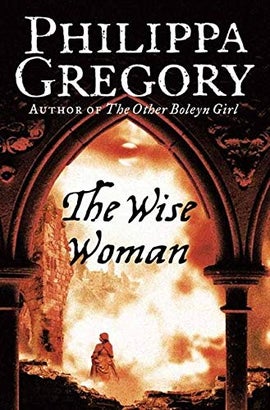Kate Mosse on her favourite novels and what makes a good story
We spoke to Kate Mosse, author of the epic historical fiction series The Burning Chambers, about her favourite novels and what makes a good story.

As a bestselling historical fiction novelist and the co-founder of the Women’s Prize for Fiction, Kate Mosse knows a thing or two about writing – and reading – great novels. The Burning Chambers, the first novel in Kate’s historical fiction series of the same name, was a Sunday Times number one bestseller, and the second book in the series, The City of Tears has just published to great acclaim. Lucy Foley, author of The Hunting Party, called it ‘a gorgeously written, utterly absorbing epic.’ We asked Kate what makes a good story, and which novels she returns to again and again.
If you love Kate Mosse's books, discover more about The Burning Chambers series, here, and don’t miss our edit of the best historical fiction of all time.
Kate Mosse’s tips for what makes a good story
Jeopardy: There has to be jeopardy. There has to be the idea that somebody wants something, and somebody else is going to prevent them from getting it.
Mystery: I think there has to be mystery, the idea that you’re not entirely sure what’s going on. Are you being duped by the characters, or can you trust them? I’ve always loved an unreliable narrator.
Sense of place: I think there’s got to be a real sense of place in historical fiction. You need to really believe that if you closed your eyes you could open them again and you’d be there in the sixteenth century or seventeenth century, and feel that it’s true.
A sense of the unexpected: I think you also need to have a sense of the unexpected so that you think you know what sort of book you’re going to read, but the minute you get immersed in it, it turns out to be an altogether different type of book.
A satisfying ending: It’s important that you have a good and satisfying ending. That old-fashioned idea that you build and build to the big climax where everything comes together at once.
Kate Mosse’s favourite novels
While Kate Mosse's books are beloved by the likes of Lucy Foley and Anthony Horowitz, here Kate shares her own favourite novels of all time.
The Hound of the Baskervilles & The Valley of Fear
by Arthur Conan Doyle
It has everything that good historical fiction needs and everything that a good crime story needs, which is an isolated setting – Dartmoor in this case – a mystery that nobody can quite solve and a real sense of place and period and investigation. Sherlock Holmes is brought down there to find out what is happening, there is this monstrous creature that is haunting Dartmoor and is killing people and killing livestock. But of course, everything about the story is so particular, so clever, that little by little you start to learn the details of what it might be. So at first, of course, it could be this monster, the Hound of the Baskervilles, but then you strip the story away and what is really going on is a story of legacy and greed and people setting up a story in order to dupe the people roundabout. And however many times you read it it’s just as thrilling, it doesn’t matter that you know the answer to whodunnit. It’s a wonderful piece of historical fiction writing.
The Wise Woman
by Philippa Gregory

A novel I come back to again and again is Phillippa Gregory’s first historical fiction novel, The Wise Woman. That novel has always stayed with me because it was a lesson in how to tell stories from a woman’s point of view. The way history presents women’s stories is very, very partial, and often writes women out of the story. It is the story of a woman who lives slightly outside of the society that she is part of. Her thirst for knowledge, her knowledge of herbs, of healing, which of course everyone in the village relies upon – this is set in the 15th or 16th century – is a weapon that will be ultimately used against her. It’s important for historical fiction to put women back in the history books because there were many women who were condemned and executed and written out of history by male historians and the male courts.
